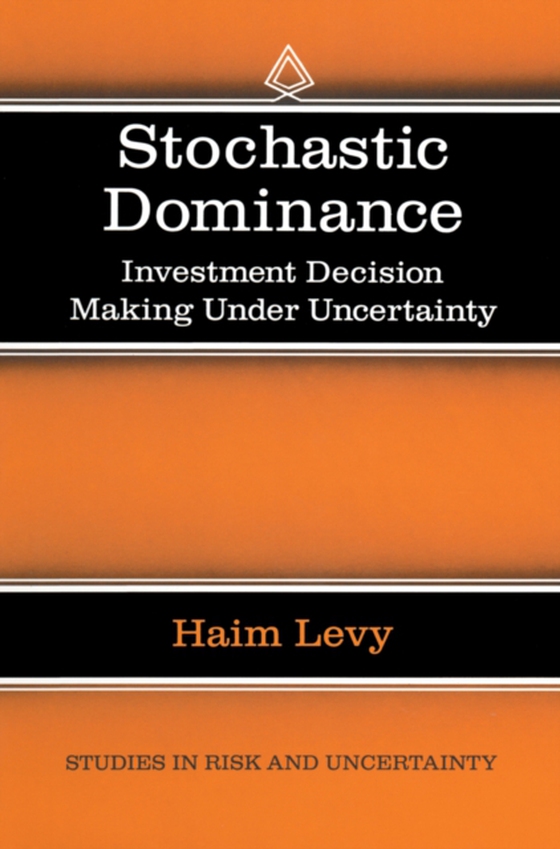
Stochastic Dominance e-bog
692,63 DKK
(inkl. moms 865,79 DKK)
This book is devoted to investment decision-making under uncertainty. The book covers three basic approaches to this process: a) The stochastic dominance approach, developed on the foundation of von- Neumann and Morgenstern' expected utility paradigm. 2 b) The mean-variance approach developed by Markowitz on the foundation of von-Neumann and Morgenstem's expected utility or simply on the assump...
E-bog
692,63 DKK
Forlag
Springer
Udgivet
9 marts 2013
Genrer
Microeconomics
Sprog
English
Format
pdf
Beskyttelse
LCP
ISBN
9781475728408
This book is devoted to investment decision-making under uncertainty. The book covers three basic approaches to this process: a) The stochastic dominance approach, developed on the foundation of von- Neumann and Morgenstern' expected utility paradigm. 2 b) The mean-variance approach developed by Markowitz on the foundation of von-Neumann and Morgenstem's expected utility or simply on the assumption of a utility function based on mean and variance. c) The non-expected utility approach, focusing on prospect theory and its modi- fied version, cumulative prospect theory. This theory is based on an experi- mental finding that subjects participating in laboratory experiments often violate expected utility maximization: They tend to use * subjective probability beliefs that differ systematically from the objective probabilities and to base their decisions on changes in wealth rather than on total wealth. The above approaches are discussed and compared in this book. W e also discuss cases in which stochastic dominance rules coincide with the mean-variance rule and cases in which contradictions between these two approaches may occur. We then discuss the relationship between stochastic dominance rules and prospect theory, and establish a new investment decision rule which combines the two and which we call prospect stochastic dominance. Although all three approaches are discussed, most of the book is devoted to the stochastic dominance paradigm.
 Dansk
Dansk

